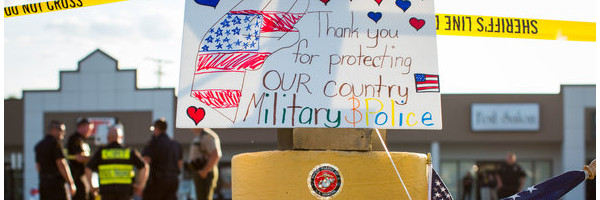A Smart Crime-Curbing System: Difference between revisions
Jump to navigation
Jump to search
No edit summary |
No edit summary |
||
| Line 7: | Line 7: | ||
|status=Concept only Stage | |status=Concept only Stage | ||
|description=Build a connected, real-time system to help curb crimes in urban areas, integrate real-time response with predictive policing, and standardize procedures for emergency response. Involve city, police, public safety officials, application developers, electrical power board, enterprise center, company lab, and citizens. | |description=Build a connected, real-time system to help curb crimes in urban areas, integrate real-time response with predictive policing, and standardize procedures for emergency response. Involve city, police, public safety officials, application developers, electrical power board, enterprise center, company lab, and citizens. | ||
|challenges=* Creating a reliable and resilient network to enable real-time communication between citizen and public safety officials | |challenges= | ||
* Creating a reliable and resilient network to enable real-time communication between citizen and public safety officials | |||
* Locating individuals needing help based on GPS or wireless mesh network | * Locating individuals needing help based on GPS or wireless mesh network | ||
* Integrating real-time response with predictive policing | * Integrating real-time response with predictive policing | ||
| Line 13: | Line 14: | ||
* Developing application within allowance of regulation | * Developing application within allowance of regulation | ||
|solutions=TBD | |solutions=TBD | ||
|requirements=* Assemble project team | |requirements= | ||
* Assemble project team | |||
* Decide on the project scope and high-level requirements | * Decide on the project scope and high-level requirements | ||
* Develop the system architecture; gain support from city and buy-in from the community partners | * Develop the system architecture; gain support from city and buy-in from the community partners | ||
| Line 23: | Line 25: | ||
* Average actual occurrence of crimes | * Average actual occurrence of crimes | ||
* Crime reduction in designated areas of the city (by 10%) | * Crime reduction in designated areas of the city (by 10%) | ||
|measurement=* Measurement of response time in seconds over 3-6 month period, compared to baseline | |measurement= | ||
* Measurement of response time in seconds over 3-6 month period, compared to baseline | |||
* Measurement of crime occurrence over past years | * Measurement of crime occurrence over past years | ||
|standards=* Requires interoperable communication interface among heterogeneous network and devices | |standards=* Requires interoperable communication interface among heterogeneous network and devices | ||
| Line 30: | Line 33: | ||
* They system will be sponsored by city and community | * They system will be sponsored by city and community | ||
|cybersecurity=TBD | |cybersecurity=TBD | ||
|impacts=* Reduction of reported crime response time | |impacts= | ||
* Reduction of reported crime response time | |||
* Reduction in crime occurrence | * Reduction in crime occurrence | ||
* Improvement in public safety and therefore quality of living | * Improvement in public safety and therefore quality of living | ||
Latest revision as of 04:11, January 2, 2025
| A Smart Crime-Curbing System | |
|---|---|

| |
 Chattanooga | |
| Team Organizations | Electrical Power Board (EPB) Chattanooga Enterprise Center CoLab UTC Police UTC CSE department |
| Team Leaders | Li Yang |
| Participating Municipalities | Chattanooga TN |
| Status | Concept only Stage |
| Document | None |
Description
Build a connected, real-time system to help curb crimes in urban areas, integrate real-time response with predictive policing, and standardize procedures for emergency response. Involve city, police, public safety officials, application developers, electrical power board, enterprise center, company lab, and citizens.
Challenges
- Creating a reliable and resilient network to enable real-time communication between citizen and public safety officials
- Locating individuals needing help based on GPS or wireless mesh network
- Integrating real-time response with predictive policing
- Implementing university campus police systems with city police systems
- Developing application within allowance of regulation
Solutions
TBD
Major Requirements
- Assemble project team
- Decide on the project scope and high-level requirements
- Develop the system architecture; gain support from city and buy-in from the community partners
- Simulate project scenario to determine feasibility
- Build an application development team, understand existing communication infrastructure, identify hardware and software requirements and constraints, identify law enforcement district for development of a pilot and testing program
- Implement the project and run pilot for two months
Performance Targets
| Key Performance Indicators (KPIs) | Measurement Methods |
|---|---|
|
|
Standards, Replicability, Scalability, and Sustainability
- Requires interoperable communication interface among heterogeneous network and devices
- Establishes standardized procedures for response to crime report
- Interoperable interface, standardized process, and off-shelf hardware can be replicated and scaled up in multiple communities and cities.
- They system will be sponsored by city and community
Cybersecurity and Privacy
TBD
Impacts
- Reduction of reported crime response time
- Reduction in crime occurrence
- Improvement in public safety and therefore quality of living
- Community acceptance and adoption of smart technologies to improve public safety, and transfer the effective model to other cities
Demonstration/Deployment
Phase I Pilot:
- Simulation of communication and response, analysis of historical open data such as 911 calls, permit data, a prototype that allows communication between citizen to law enforcement in certain areas.
Phase II Deployment:
- Real-time working application tied to university campus and city police system on city-wide scale, supporting over 50% of the city.